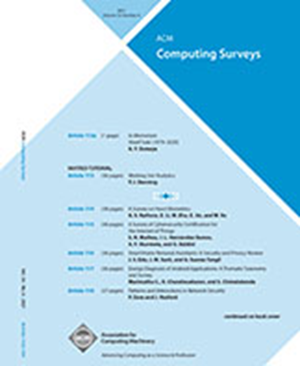基于少镜头学习的医学图像分割:综述与比较研究
IF 28
1区 计算机科学
Q1 COMPUTER SCIENCE, THEORY & METHODS
引用次数: 0
摘要
医学图像分割在帮助临床医生诊断危重疾病方面起着至关重要的作用。在深度学习中,few-shot学习方法旨在通过利用更少的示例来确定对新类的预测来复制人类学习。医学影像界的研究人员还探索了利用元学习、基础模型和自监督学习(SSL)进行少镜头医学图像分割的新方法。认识到这一日益增长的兴趣,我们回顾了从2020年到2025年初关于少镜头医学图像分割的文献,重点关注架构修改、损失启发学习策略和元学习框架。我们进一步将每个类别划分为面向细粒度深度学习的解决方案,包括自监督学习、对比学习、正则化和基础模型,这些模型提供了对架构改进和表示学习策略的深入讨论。此外,我们还介绍了医学和计算机视觉领域的几个少数镜头分割模型的初步结果,评估了它们在医学图像应用中的优势和局限性。最后,基于观察到的局限性、自然图像领域的进展和实证研究结果,我们概述了未来的研究方向,并对数据高效学习、基础模型的快速适应和泛化提供了具体的见解。代码可以在这里找到。本文章由计算机程序翻译,如有差异,请以英文原文为准。
Few-Shot Learning for Medical Image Segmentation: A Review and Comparative Study
Medical image segmentation plays a crucial role in assisting clinicians with diagnosing critical medical conditions. In deep learning, few-shot learning methods aim to replicate human learning by leveraging fewer examples for determining a prediction for a novel class. Researchers in the medical imaging community have also explored novel methods for few-shot medical image segmentation, leveraging meta-learning, foundation models and self-supervised learning (SSL). Acknowledging this growing interest, we review the literature on few-shot medical image segmentation from 2020 to early 2025, focusing on architectural modifications, loss-inspired learning strategies, and meta-learning frameworks. We further divide each category into fine-grained deep learning-oriented solutions, including self-supervised learning, contrastive learning, regularization, and foundation models providing in-depth discussions on architectural improvements and representation learning strategies. Additionally, we present preliminary results from several few-shot segmentation models across both medical and computer vision domains, evaluating their strengths and limitations for medical image applications. Finally, based on the limitations observed, advancements from the natural image domain, and empirical findings, we outline future research directions, providing specific insights into data-efficient learning, rapid adaptation of foundation models and generalization. The code is available here.
求助全文
通过发布文献求助,成功后即可免费获取论文全文。
去求助
来源期刊

ACM Computing Surveys
工程技术-计算机:理论方法
CiteScore
33.20
自引率
0.60%
发文量
372
审稿时长
12 months
期刊介绍:
ACM Computing Surveys is an academic journal that focuses on publishing surveys and tutorials on various areas of computing research and practice. The journal aims to provide comprehensive and easily understandable articles that guide readers through the literature and help them understand topics outside their specialties. In terms of impact, CSUR has a high reputation with a 2022 Impact Factor of 16.6. It is ranked 3rd out of 111 journals in the field of Computer Science Theory & Methods.
ACM Computing Surveys is indexed and abstracted in various services, including AI2 Semantic Scholar, Baidu, Clarivate/ISI: JCR, CNKI, DeepDyve, DTU, EBSCO: EDS/HOST, and IET Inspec, among others.
 求助内容:
求助内容: 应助结果提醒方式:
应助结果提醒方式:


